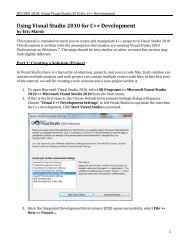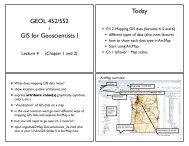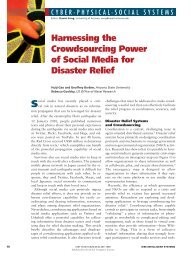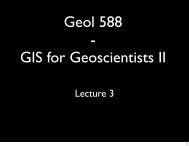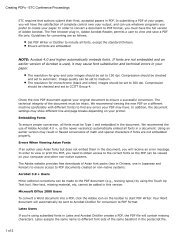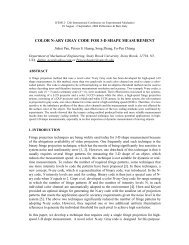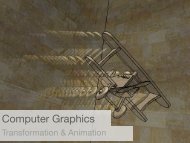First of all, we thank you for your great effort reviewing our paper ...
First of all, we thank you for your great effort reviewing our paper ...
First of all, we thank you for your great effort reviewing our paper ...
- No tags were found...
You also want an ePaper? Increase the reach of your titles
YUMPU automatically turns print PDFs into web optimized ePapers that Google loves.
eal‐time 3D absolute coordinate measurement by employing GPU techniques [3, 4]. In <strong>our</strong><strong>paper</strong> [1], <strong>we</strong> also addressed a problem to obtain color by utilizing an additional color camera.Ho<strong>we</strong>ver, obtaining precisely aligned geometry and color texture remains not very difficult.Over the past few years, <strong>we</strong> have been constantly requested to develop a simultaneousgeometry and color texture acquisition technique <strong>for</strong> <strong>our</strong> real time system. They <strong>all</strong> requiredthat the color texture should be precisely aligned with 3‐D geometry point by point <strong>for</strong> eachframe. In the meantime, the cost <strong>of</strong> the system should not be very much increased. In this<strong>paper</strong>, <strong>we</strong> propose such a technique that uses a single‐chip color camera to simultaneouslycapture the geometry and color texture simultaneously. The major advantages <strong>of</strong> this proposedtechnique are: 1) acquire 3D geometry and color texture simultaneously, 2) has the potential toimplement into <strong>our</strong> real‐time system, 3) acquire color texture that is precisely aligned with the3D geometry, and 4) Cost is not significantly increased.• Many <strong>of</strong> the advantages/disadvantages are compared to a B/W camera <strong>for</strong> 3D capture. Thepremise <strong>of</strong> this <strong>paper</strong> is that this is better than a B/W camera <strong>for</strong> 3D capture and a color camera<strong>for</strong> texture. The advantages/disadvantages should compare to the BW/color camera combo.I think I have addressed in this introduction section. No need to repeat again.Low cost. The B/W camera with or without the Bayer Filter costs the same. This argument is<strong>we</strong>ak. A better argument perhaps is with other systems, color bleeding can be prevented byreplacing color wheel <strong>of</strong> projector (expensive/difficult), multiple cameras. Others use 3 chipCCD (where as <strong>you</strong> use standard Bayer).Well, these arguments <strong>we</strong>re even <strong>we</strong>aker because the hardware costs <strong>of</strong> different systems aredifferent. Our argument is that <strong>we</strong> do not increase the hardware cost at <strong>all</strong> to obtainsimultaneous and precisely aligned COLOR texture as a BONUS.Longer Exposure. B/W vs color (Bayer?). This argument could use a bit more explanation. Yes,the color filter on each Bayer pixel filters out 2/3's <strong>of</strong> the light, but this technique could be usedon a 3‐CCD camera with dichroic filters in which case a majority <strong>of</strong> the light will be captured.Again, the discussion <strong>of</strong> the effects <strong>of</strong> using a Bayer pattern is interfering with making theadvantages <strong>of</strong> the main technique obvious. Many <strong>of</strong> the disadvantages appear to come fromusing a Bayer pattern, not from the technique itself. In fact, using a 3‐CCD camera would <strong>all</strong>owthe color fringe with the largest modulation to be used <strong>for</strong> phase computation (similar to ZhangZHs work [2]), and capture a full resolution texture that matched the resolution <strong>of</strong> the 3Dgeometry. The pixel to pixel intensity differences would be lo<strong>we</strong>r, which may lead to bettersignal to noise ratio (and less need <strong>for</strong> the Gaussian averaging to remove noise which mustlo<strong>we</strong>r resolution), and lead to better light collection.Are <strong>you</strong> only selling <strong>for</strong> Zhang ZH’s works? Just kidding! Besides the drawbacks <strong>of</strong> 3‐CCDcameras addressed previously, 3‐CCD cameras suffer the same type <strong>of</strong> light loss as Bayer filtercameras. Prism is usu<strong>all</strong>y used to separate the incoming light into three parts, red, green, andblue, which are then passed onto the sensor. There<strong>for</strong>e, only about 1/3 <strong>of</strong> the light <strong>for</strong> each





